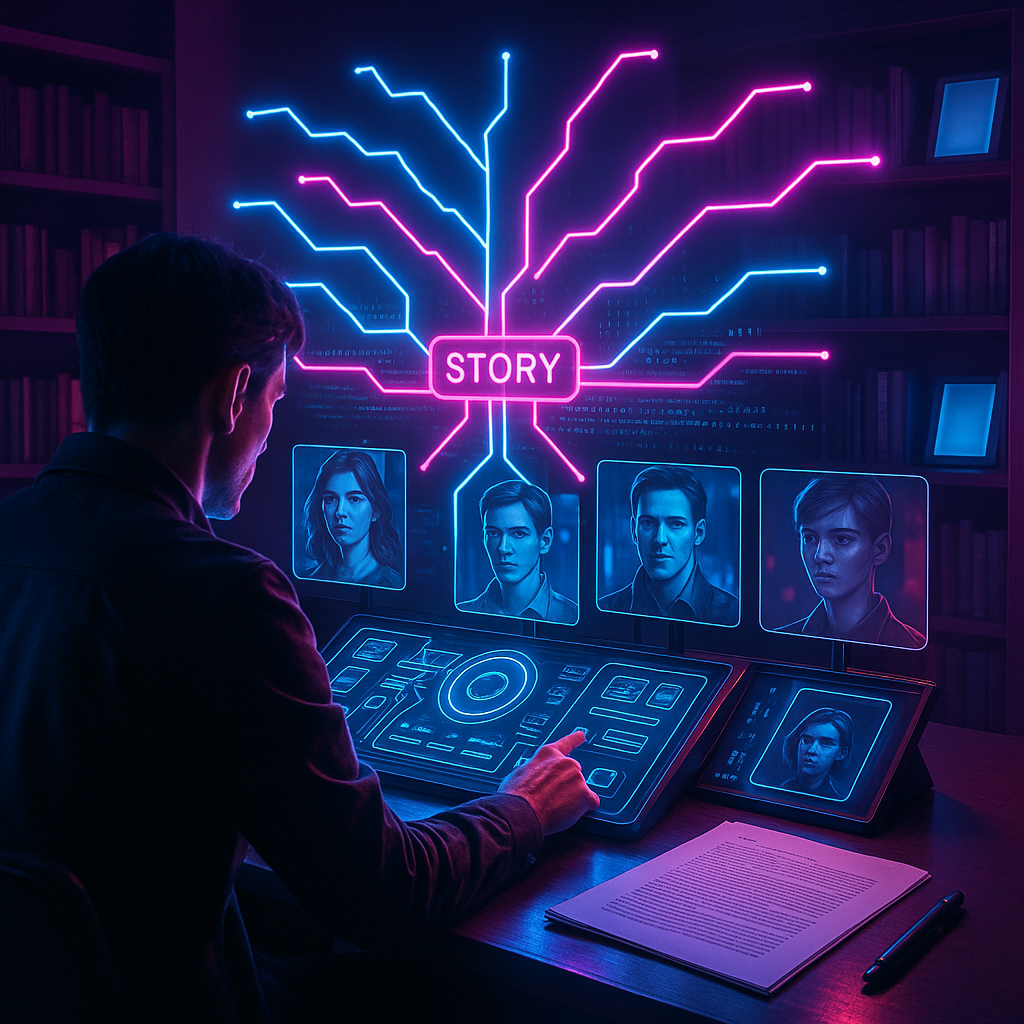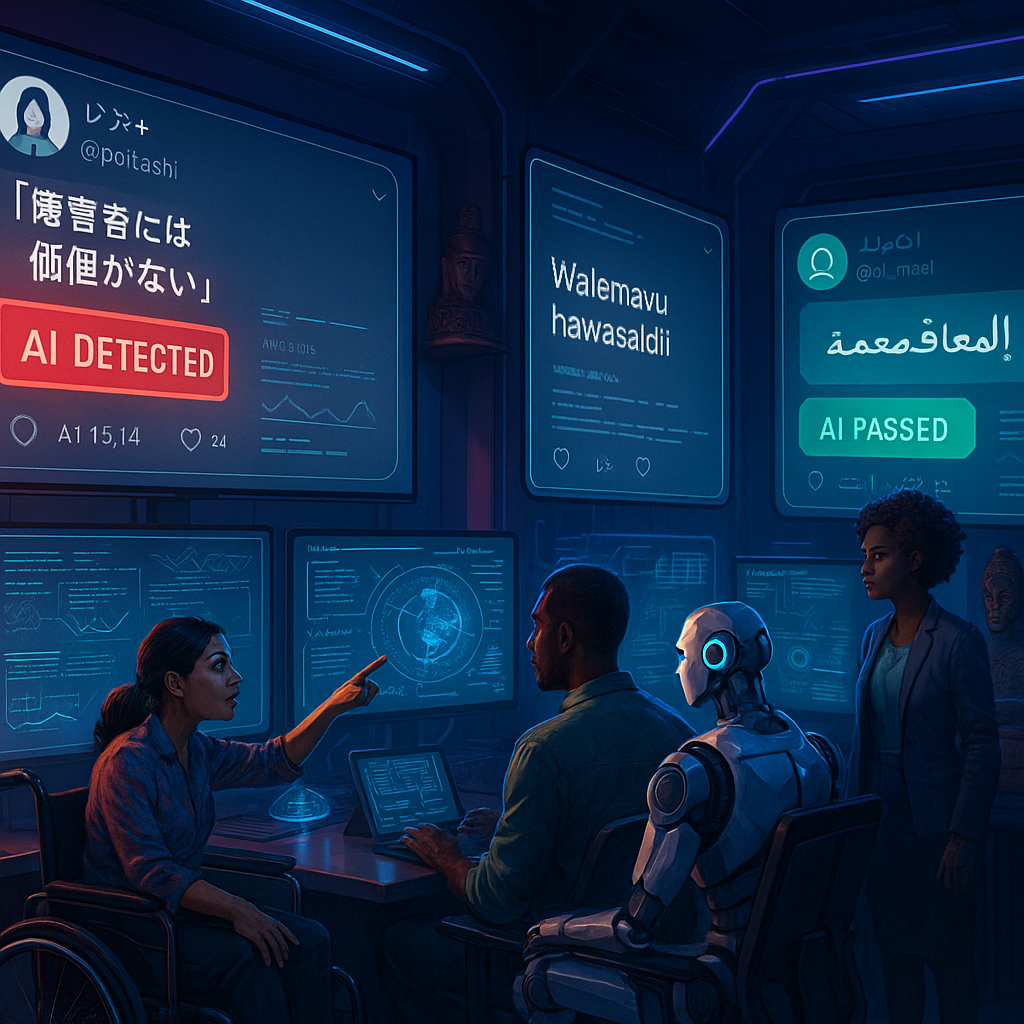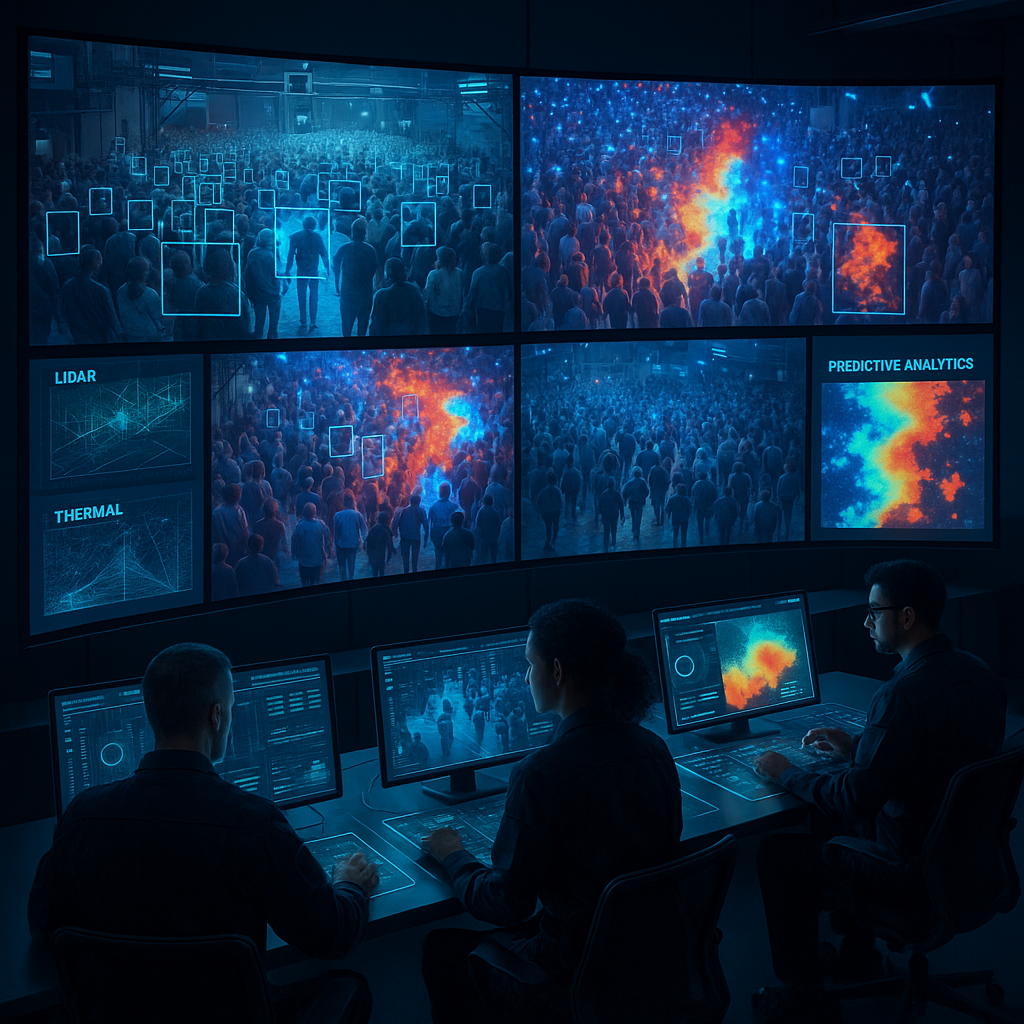Key Takeaways
- Readers become architects of the narrative journey: AI-driven interactive stories empower readers to steer plot direction, character fate, and story outcomes, offering unprecedented agency compared to traditional linear fiction.
- AI adapts storylines in real time for hyper-personalization: Through dynamic narrative adaptation, AI platforms adjust scenes, dialogue, and pacing on the fly, creating immersive experiences tailored to each individual’s preferences and choices.
- Human creativity partners with algorithmic imagination: Rather than replacing authors, AI acts as a generative collaborator. It supplements human vision with endless narrative permutations, yet relies on the nuance, intention, and emotional insight that writers bring to the table.
- Ethical puzzles emerge at the intersection of author and AI: Beyond technological achievement, interactive storytelling surfaces complex questions about creative ownership, authorial voice, and content curation. These challenges remain largely uncharted in mainstream discourse.
- Character development stretches into unexpected territory: Intelligent systems track reader actions and adapt character arcs accordingly, moving beyond stock personalities to deliver emotionally nuanced, plausibly evolving companions.
- AI storytelling platforms unlock ‘living’ stories: From blueprint templates to advanced generative engines, today’s platforms enable writers and enthusiasts to experiment with alternate endings, branching paths, and responsive environments on an unprecedented scale.
- The future promises collaborative worlds, not only choose-your-own tales: As AI matures, interactive narratives will increasingly become communal spaces. Multiple readers and writers may collectively shape ever-evolving storyworlds, blurring the line between consumption and co-creation.
Viewed through these insights, the interactive narrative AI landscape emerges as a vibrant intersection of technology, artistry, and ethical curiosity. This is the gateway to a new breed of storytelling. Let’s delve deeper into the platforms, creative processes, and emerging questions shaping this dynamic genre.
Introduction
Imagine a story that adapts itself to your every decision, shifting its tone, plot, and characters with your every choice. Interactive narrative AI storytelling rewrites the rules of fiction, empowering readers to become shapers of their own adventures rather than mere observers.
In today’s landscape, AI-driven interactive stories seamlessly merge human creativity with algorithmic ingenuity. These rich, adaptive worlds remember your actions, react to your preferences, and develop living, evolving narratives. The boundaries between creative agency, authorship, and collaboration are being redefined, sparking fresh excitement and new ethical puzzles about ownership and authenticity in the creative process.
Now is the moment to explore how intelligent storytelling platforms place readers in the creative driver’s seat, how AI is augmenting—not replacing—the craft of authors, and what the next evolution of interactive fiction may bring across fields from entertainment and education to marketing and beyond.
Stay Sharp. Stay Ahead.
Join our Telegram Channel for exclusive content, real insights,
engage with us and other members and get access to
insider updates, early news and top insights.
 Join the Channel
Join the Channel
The Evolution of AI-Powered Narrative Systems
The emergence of AI authors marks a tectonic shift in interactive storytelling, transforming static branching narratives into expansive digital storyworlds that respond organically to user choice. Where early interactive fiction hesitated at binary options, AI-powered stories unfold with infinite nuance, weaving together coherence and surprise in real time.
A vivid example is AI Dungeon, which leveraged advanced language models to boost user engagement by 300%. This leap forward showcased the power of dynamic storytelling—plots that remain consistent while responding authentically to each reader’s decisions.
Architectural Foundations of AI Storytelling
Behind this revolution, sophisticated technical frameworks orchestrate the magic. Key components include:
- Neural Language Models: Serving as the core engine for natural-sounding dialogue and narrative generation.
- Context Management Systems: Keeping track of branching story lines and ensuring story coherence across divergent paths.
- Character Personality Matrices: Preserving internal consistency in character voices, behavior, and evolution as the plot adapts.
- Environmental State Tracking: Monitoring and updating the conditions and rules of the story world in response to user actions.
These elements combine to create what Stanford’s Interactive Narrative Lab calls “responsive story ecosystems.” According to their recent research, well-designed AI storytelling systems can achieve up to 85% narrative coherence—a level once unthinkable for machine-generated fiction.
The Dance of Choice and Consequence
Today’s generative storytelling platforms dramatically expand reader agency. No longer confined to pre-scripted options, users interact with stories that dynamically respond by:
- Generating personalized dialogue and scenarios based on evolving character relationships.
- Adapting overall plot trajectories to accommodate subtle shifts in reader preferences and behavioral patterns.
- Introducing emergent story elements and surprises driven by individual or collective audience input.
These innovations have far-reaching implications beyond entertainment alone. In educational settings, personalized AI narratives are credited with increasing student engagement and learning retention by up to 40%. In healthcare, interactive narratives personalize therapeutic journeys or patient education. In marketing, brands experiment with AI-crafted story campaigns that adapt in real time to audience engagement, making content memorable and deeply resonant.
Collaborative Creation: Human Writers and AI Systems
The New Creative Partnership
A profound transformation is occurring in the relationship between human authors and AI storytelling systems. Writers are discovering that AI is not a rival, but a creative amplifier—a catalyst for deeper immersion and richer possibility. Professional writers using AI collaboration tools report:
- A 60% reduction in time spent on plot structure development.
- A 45% increase in narrative branching and complexity.
- Up to 70% more unique character interactions within a single story.
By leveraging AI’s endless generative power, writers focus energy on the narrative’s soul, its emotional arcs and philosophical underpinnings. This symbiosis results in stories that would be nearly impossible for either human or AI to craft alone.
Balancing Creative Authority
Yet, the balance of creative authority remains a central question. While AI offers a multitude of possibilities, writers retain irreplaceable roles:
- Shaping the ideological and emotional core of the narrative.
- Establishing overarching themes or moral questions.
- Refining, curating, and editing AI-generated material for imaginative consistency and quality.
- Ensuring the narrative resonates with human values, cultural nuances, and ethical standards.
The most powerful interactive stories arise from “guided emergence,” in which the author’s intent harmonizes with AI’s generative diversity, resulting in a tapestry of shared creativity.
This collaborative paradigm is bearing fruit across various sectors. In education, teachers use AI-powered writing platforms to create adaptive learning environments tailored to student comprehension levels and interests. In legal and compliance fields, dynamic document creation merges human oversight with machine-generated content, streamlining contract management and compliance training.
Technical Innovations in Reader Response
Adaptive Learning Systems
Modern AI storytelling platforms are defined by their ability to learn from reader behavior and adapt on the fly. These adaptive systems closely track a range of parameters:
- Emotional Response Patterns: Gauging reactions through explicit feedback or inferred sentiment.
- Narrative Pacing Preferences: Fine-tuning the speed and rhythm of story delivery to suit individual comfort zones.
- Language Complexity: Modulating vocabulary and sentence structure to match the reader’s fluency and preferences.
- Personalized Branching: Curating scenarios and consequences based on the reader’s unique history and previous choices.
At the Digital Narrative Institute, researchers found that adaptive AI-driven stories increased reader satisfaction scores by 75% compared to static counterparts. Similar adaptive systems are impacting finance (where customer profiles shape educational content), environmental science (where branching simulations model climate decisions), and even retail (with product stories tailored to consumer journeys).
The Role of Natural Language Understanding
The true backbone of intelligent narrative is natural language understanding. This capacity empowers AI to:
- Detect emotional subtext in reader interactions and adjust narrative tone accordingly.
- Generate dialog that is both contextually appropriate and emotionally relevant.
- Sustain complex, evolving character personalities across divergent story paths.
- Enrich story worlds with dynamic, responsive world-building elements.
Experts refer to this AI capability as “narrative empathy.” It’s the ability to perceive, interpret, and reflect back the reader’s journey through interactive storytelling. This empathetic responsiveness is expanding into healthcare (with narratives adjusting to patient mood), finance (clarifying complex topics through adaptive stories), and personalized educational guidance.
For a broader philosophical perspective on how algorithms mirror and shape our sense of self within these creative systems, see generative identity.
Stay Sharp. Stay Ahead.
Join our Telegram Channel for exclusive content, real insights,
engage with us and other members and get access to
insider updates, early news and top insights.
 Join the Channel
Join the Channel
Philosophical Implications of AI Storytelling
Questions of Narrative Agency
The intersection of human authorship, audience interaction, and AI generative power invites deep philosophical inquiry. Where does authorship reside when the narrative’s form is shaped by so many hands (human, machine, and reader)?
Several forms of agency overlap in this new paradigm:
- Reader agency: Directing actions, choices, and even world-shaping decisions.
- AI generative capability: Offering near-infinite permutations, evolving story branches and surprise outcomes.
- Human creative direction: Infusing meaning, theme, and coherence; editing or redirecting emergent content.
- Emergent narrative potential: The unpredictable magic at the confluence of these forces.
Philosophers of technology describe this as “distributed narrative agency”—a creative ecosystem where meaning, ownership, and story evolve from continuous interplay among participants, systems, and makers. In these living narratives, the line between author, audience, and AI blurs, reimagining the ancient contract of storytelling itself.
This philosophical shift is already surfacing in other fields. In law, questions emerge about intellectual property rights for AI-assisted works. In business, collaborative design tools democratize innovation, creating new forms of collective ownership. Even in science, AI-augmented research challenges traditional authorship and credit structures.
For a deeper look at the philosophical underpinnings of language, authorship, and meaning as they relate to AI, read AI origin philosophy.
Conclusion
AI-powered narrative systems represent not just a technological leap but a cultural reimagining of how stories come to life. By fusing neural language models, adaptive learning, and human creative mastery, these platforms create interactive storyworlds that are both responsive and alive, fostering a deeper relationship between storyteller, audience, and machine.
As the distance narrows between author, AI, and participant, fresh challenges and opportunities arise: from grappling with questions of narrative agency and creative ownership to harnessing the emerging power of shared, communal storytelling. Far from diminishing human contribution, AI acts as an amplifier. It expands the contours of imagination, complexity, and emotional resonance within narrative spaces.
Exploring the boundaries of identity, storytelling, and digital creativity goes hand in hand with understanding broader issues such as cybernetic identity in a synthetic age.
Looking ahead, the future of interactive storytelling will belong to those bold enough to experiment with creative partnerships (between writers, readers, and the alien minds of artificial intelligence). Whether these living stories shape how we learn, connect, or unravel our personal and collective myths, they challenge us to consider what it means to create and share meaning in a world where imagination is truly boundless. The question remains not whether we will enter these storyworlds, but how we will choose to participate in shaping the narratives that define us all.





Leave a Reply